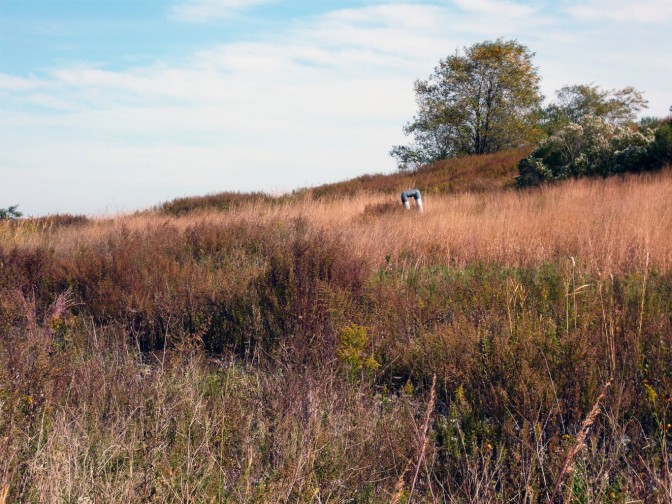Sarah Yuster
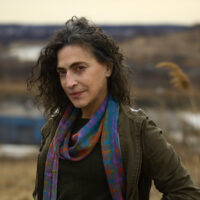
Sarah Yuster is our new artist in residence. Her long term focus on the crossroads of art and environment makes her work ideal for a partnership with Fresh Kills Park Alliance/Freshkills Biological Station. As we prepare to garner funding for this position, bringing her ideas and imagery to the public will be beneficial, undoubtedly opening us up to a myriad of opportunities.
Uniquely suited for this position, Yuster, a self-proclaimed “marsh child and tree-climber” grew up wandering the tangled thickets of “Fairyland”, a now decimated area that bordered what is now Freshkills.
Sarah’s artwork is well-recognized, in two Smithsonian collections, and is accessible to a broad audience. We strongly believe this collaboration has potential to widen the scope of interest in the cutting edge work underway at Freshkills, adding dimension and visibility to these multifaceted scientific endeavors.
Her portraits of the biologist, “father of biodiversity” Edward O. Wilson, science popularizer Neil DeGrasse Tyson and nature explorer/author Diane Ackerman were part a long running solo exhibit, Biophiles, Habitats and Beasts at the Staten Island Museum. The Biophiles series continues with in-situ paintings of conservationists and nature enthusiasts of all professional levels, a perfect fit for Freshkills.
Education
Greek Language Center, New York, NY (1985-1990; 1999 – 2002)
Italian Cultural Institute, New York, NY (1985-1986)
School of Visual Arts, New York, NY (BFA 1980)
High School of Art and Design, New York, NY
Additional Information
Selected Works
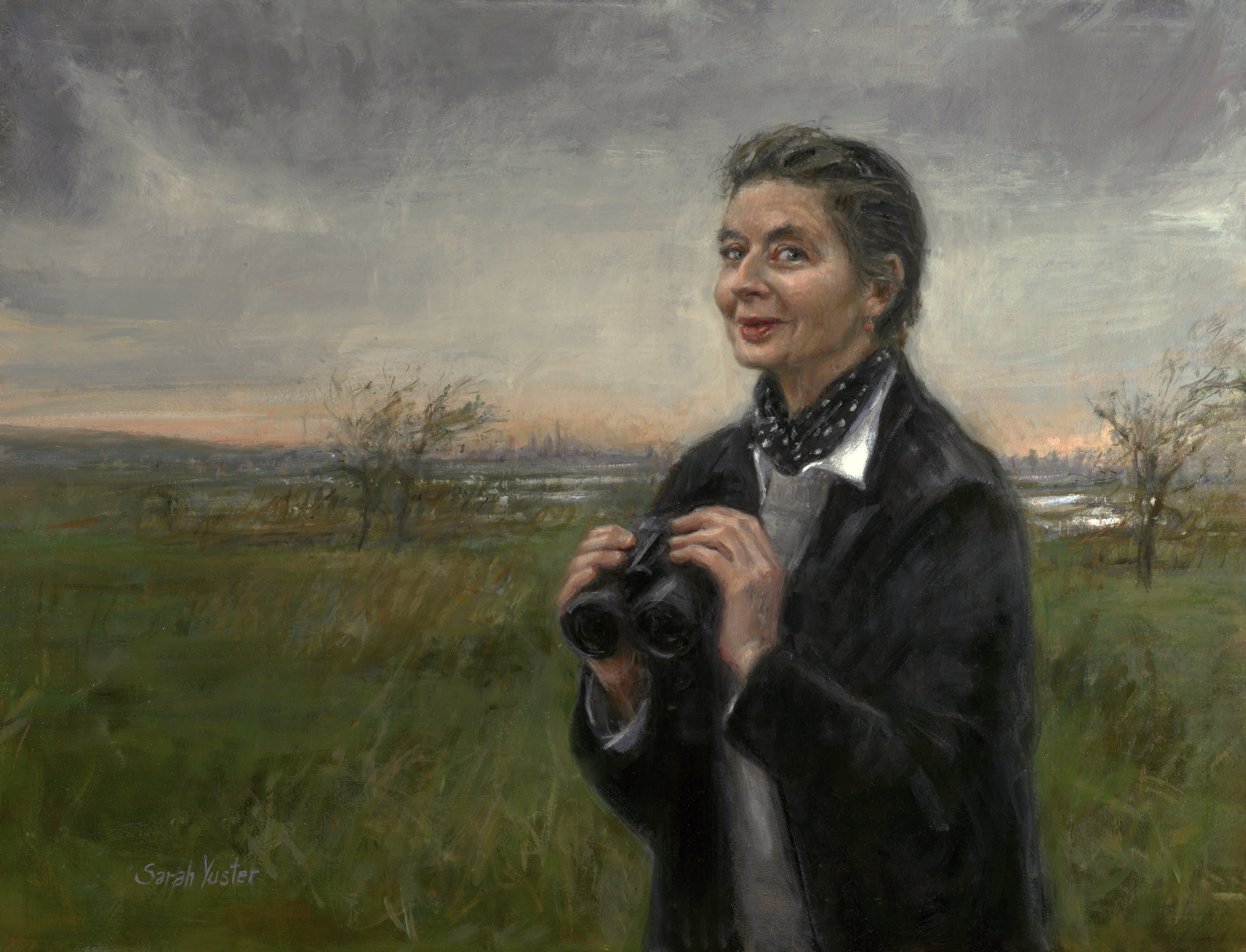
Isabella Rossellini at Freshkills Park oil on canvas 34” x 26” Isabella Rossellini came to Freshkills Park on Staten Island late in the afternoon for an ornithological presentation. Renowned for her jewel-like beauty, acting, and notable lineage (her mother is Swedish film star Ingrid Bergman, father Italian filmmaker Roberto Rossellini), she has a background in environmental studies and animal behavior. She also runs a farm on Long Island. It was a pleasure and privilege to paint Rossellini. Her exquisite face has been ceaselessly celebrated, monetized and photographed for most of her life. Here though, she engages with the viewer in a light moment before peering through another set of lenses to observe wildlife.
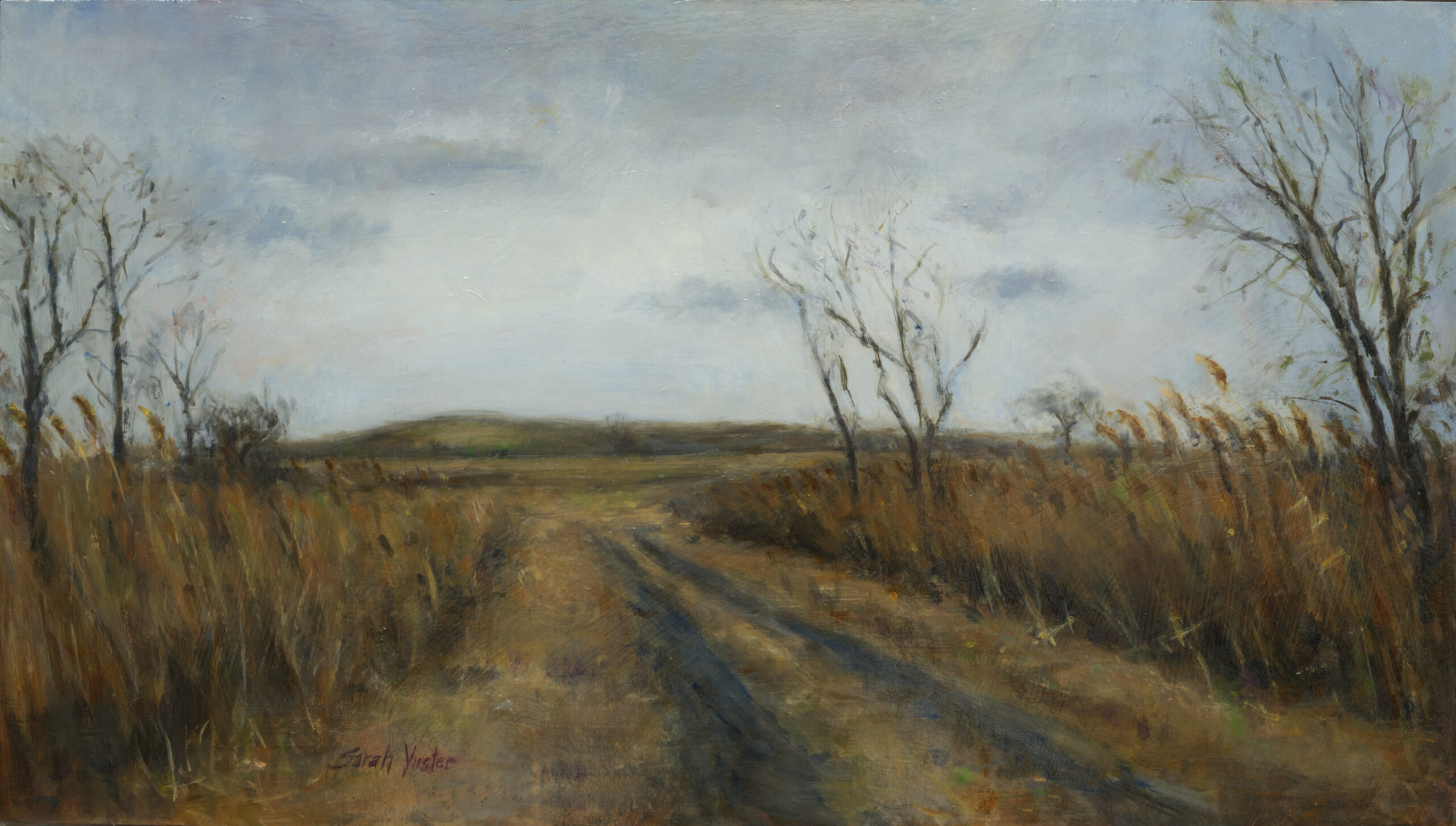
Last of Winter at Freshkills. 24.5” x 14” oil on mdf. (2025)
A dirt path winds through the barren landscape, flanked by dry grasses and leafless trees under a cloudy sky.
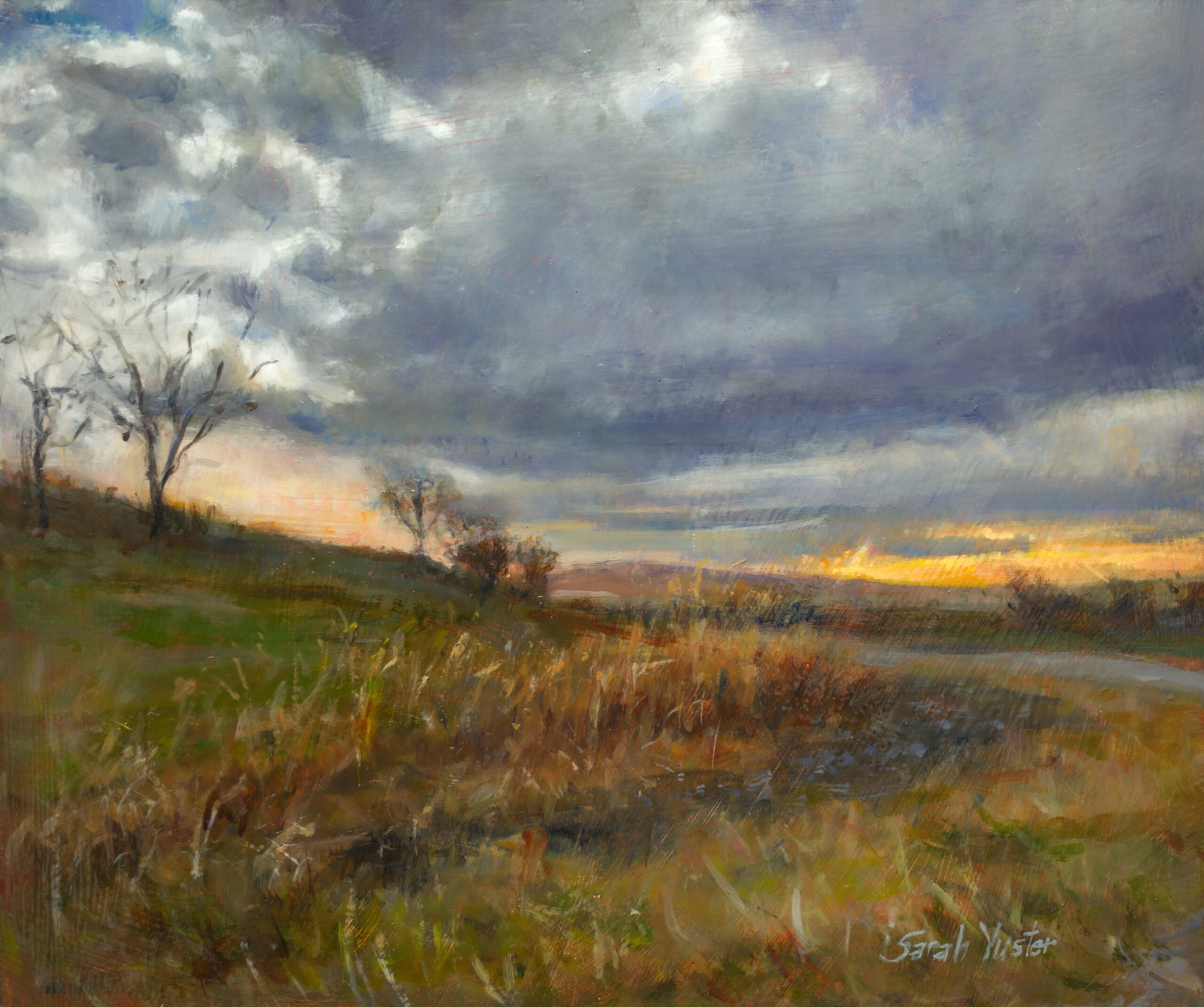
Freshkills, April. Oil on wood 13″ x 11.5″ (2025)
The vastness of Freshkills and its sense of being elsewhere matches the temperamental sky of this early April evening.
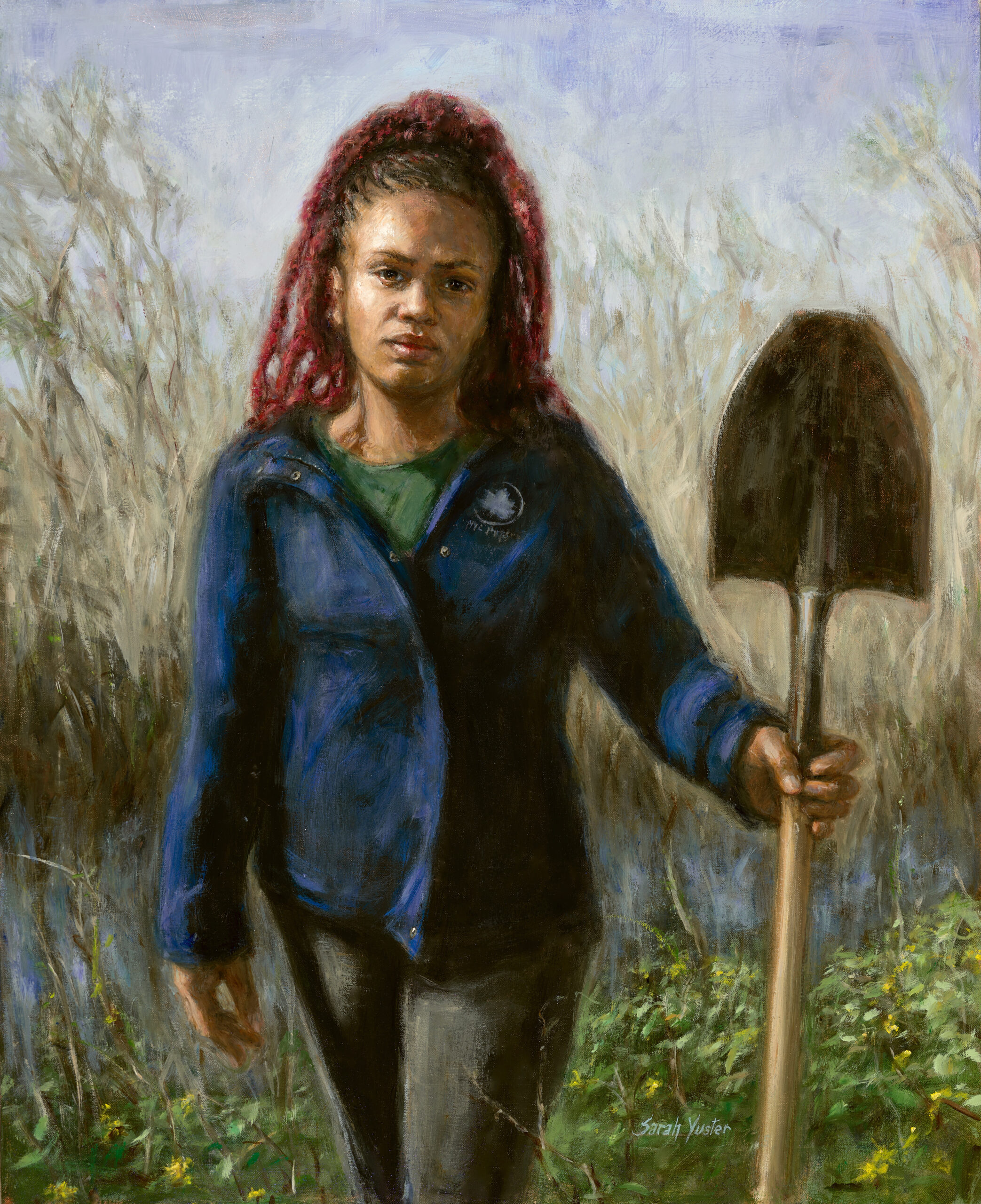
Myisha Humphrey. Oil on canvas. 26” x 32” (2022)
Myisha Humphrey is supervisor of operations at Greenbelt Native Plant Center. She started with NYC Parks as a gardener, now in demand at sites around the city to spearhead and implement reforestation and native planting projects. “The Science of Plants has run in my blood for centuries; it’s no wonder I am a professional gardening expert. It is my personal preference to wander the corners of New York finding, developing, staging, maintaining and encouraging the strength of indigenous native vegetation. I often find my own journey to be comparable with the encroached areas I encounter day after day, only to uncover the brilliance of a native landscape.”
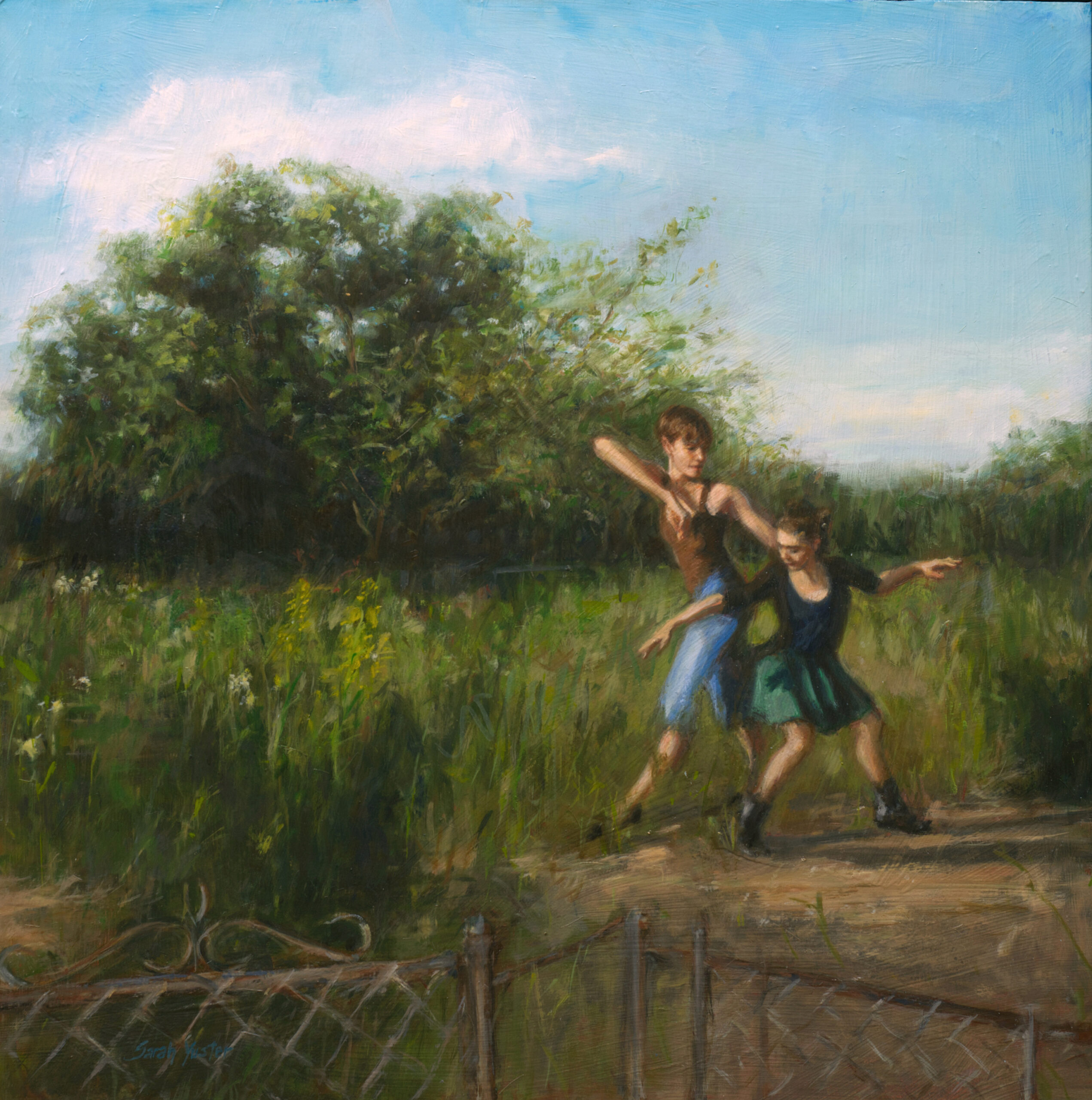
Counterpoint. Oil on pdf panel. 24” x 24” (2017)
Dancers Laura Neese and Melissa West move through an abandoned lot in Graham Beach where a Hurricane Sandy home once stood. From the External Forces series funded by a NYSCA grant and exhibited through NYC Parks. External Forces is a series of oil paintings depicting artists in situ at various Staten Island locations – specifically preserved areas (Greenbelt, Bluebelt and parklands). These paintings are acknowledgement of the inspiration provided to these artists by their environment with a nod to the significance, import of conservation and land preservation for all strata of the society.
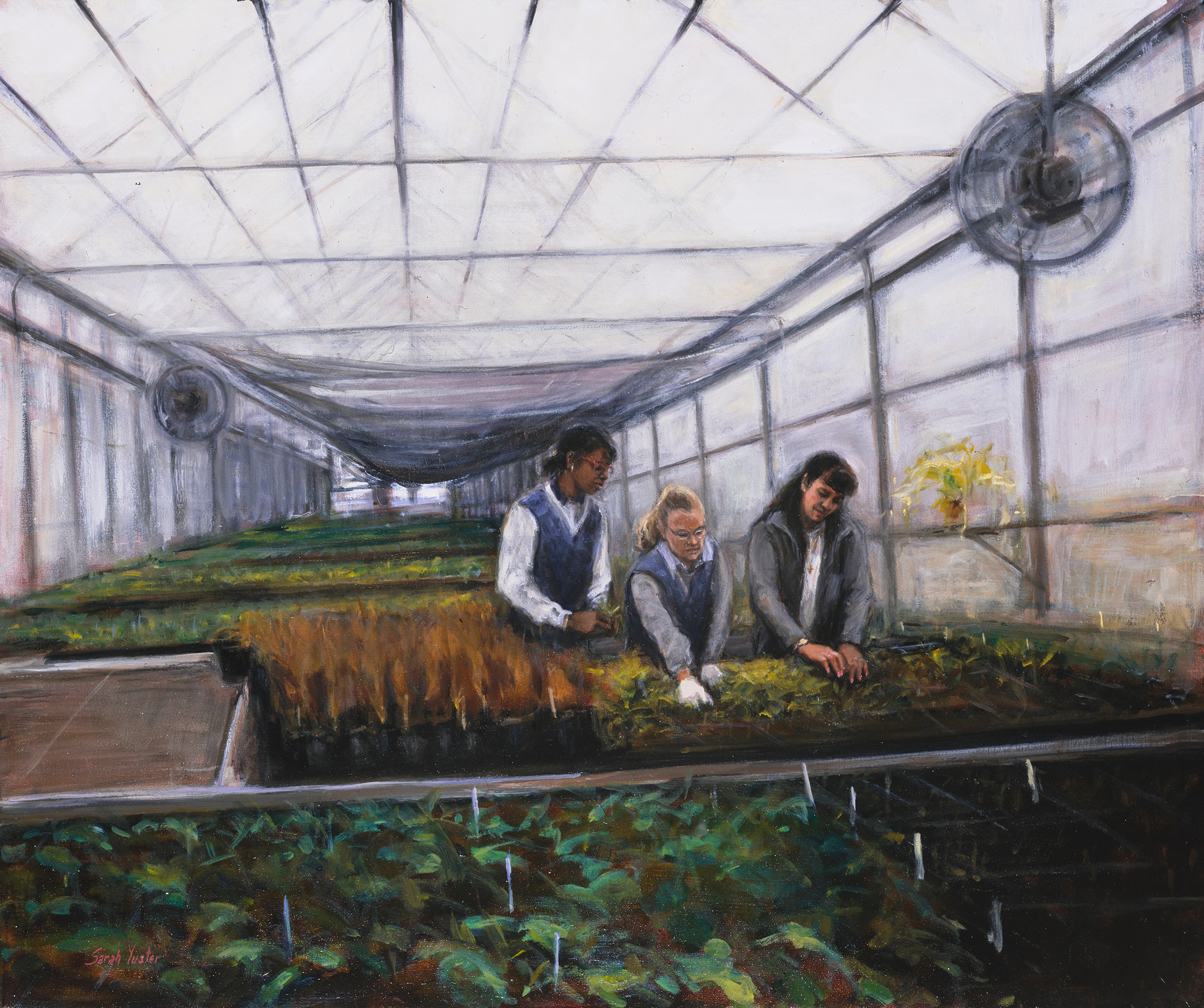
The Restorers. Oil on canvas. 48” x 40” (2004)
Dorothy, Denise and Margarita are specialists in identifying native plant seed and coaxing the delicate seedlings into healthy plants The setting is a greenhouse at the NYC Parks Native Plant Restoration Center in Travis, Staten Island.
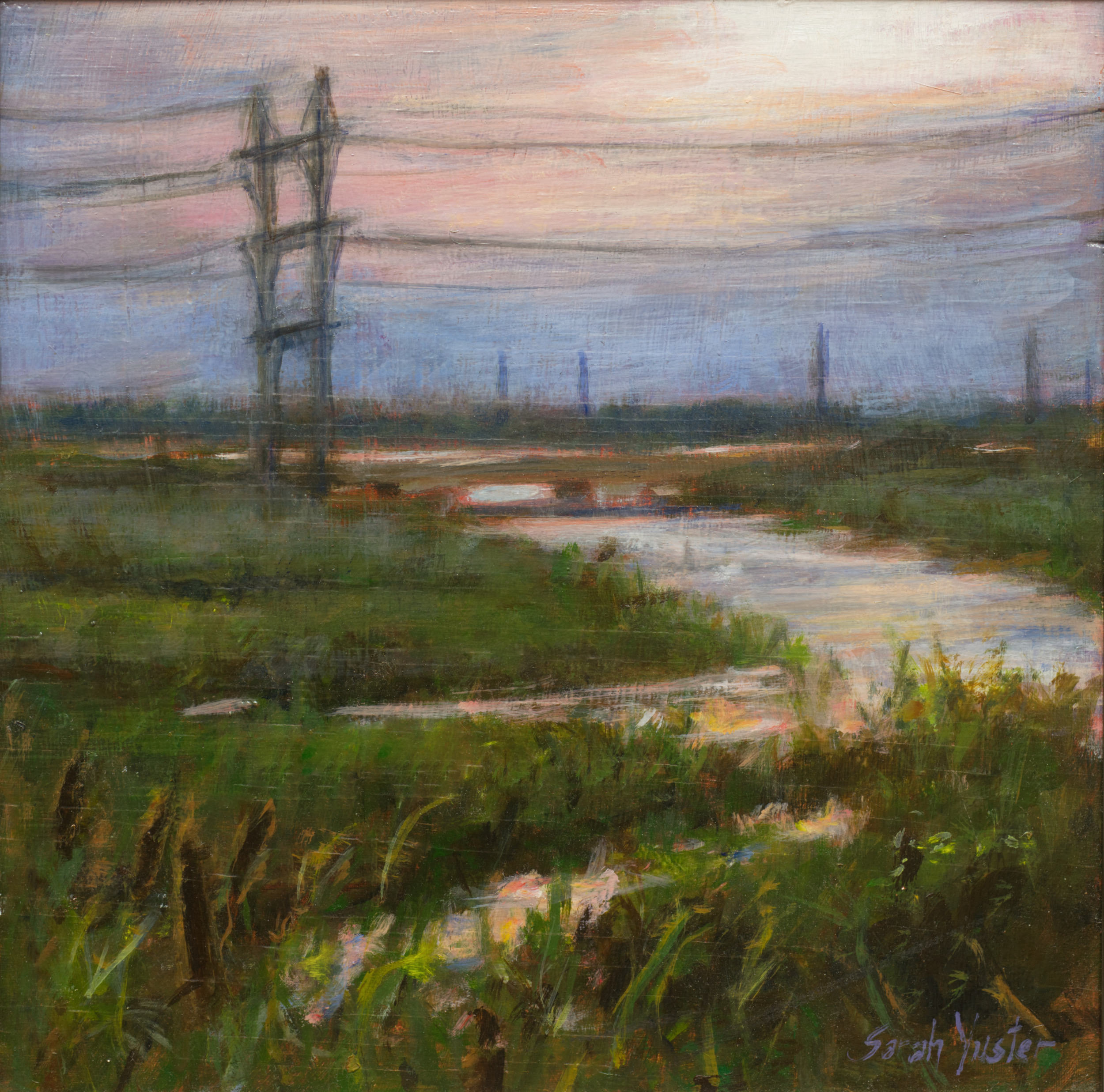
Salt Marsh and Power Lines. Oil on wood. 12” x 12”. (2020)
Southwest Staten Island has miles of salt marshes hosting many types of herons, waterfowl and migrating birds as well as other less conspicuous wildlife. This area is across from New Jersey’s industrial shore
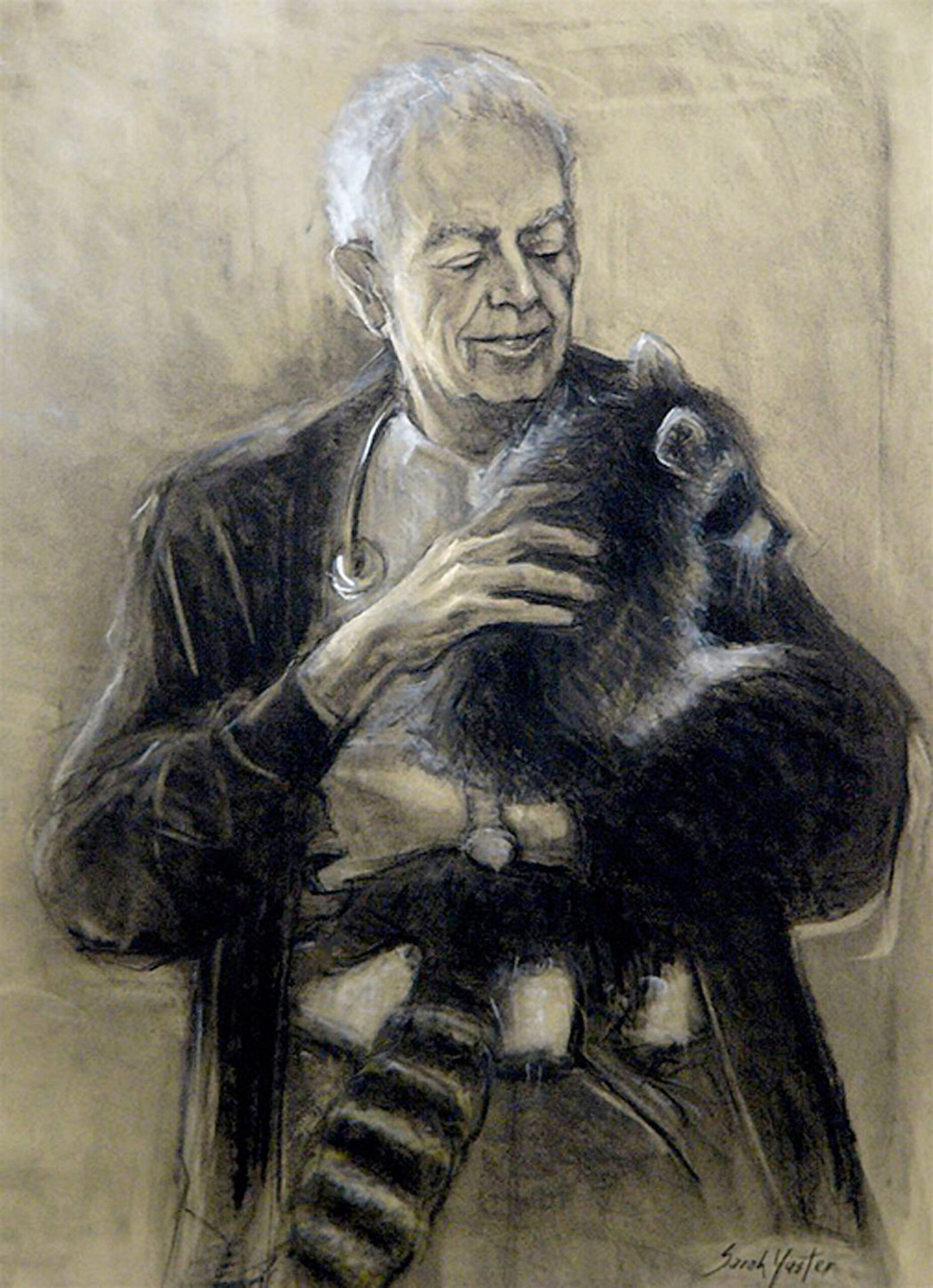
Bob Zink and Frankie charcoal and conte crayon on rag paper. 32” x 42” (2007)
The late Robert Zink was a New York State and federally licensed wildlife rehabilitator, certified to rehab raccoons, skunk, bats, and red fox in New York City. He grew up near the Central Park Zoo, where he “developed a sense of stewardship and respect for animals at a young age.” While working as a comptroller for the US. Navy, he often took in injured animals and began doing so full-time when he retired.
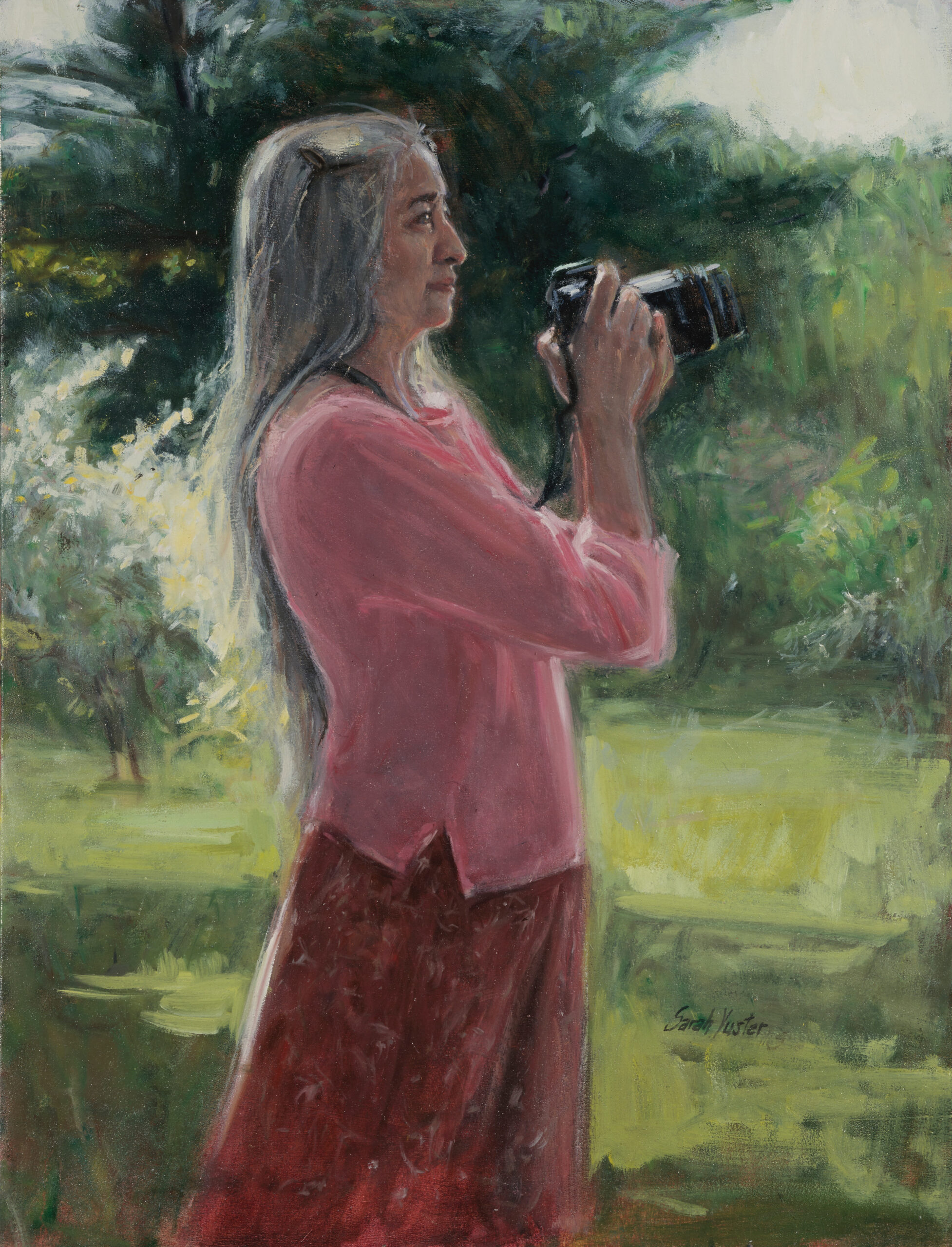
Irma Bohorquez-Geisler. Oil on canvas 28” x 36” (2007)
Irma Bohorquez, Oxford educated entymologist is from Mexico City. She is also a Mexican folklorist and photographer, exhibiting throughout the US.
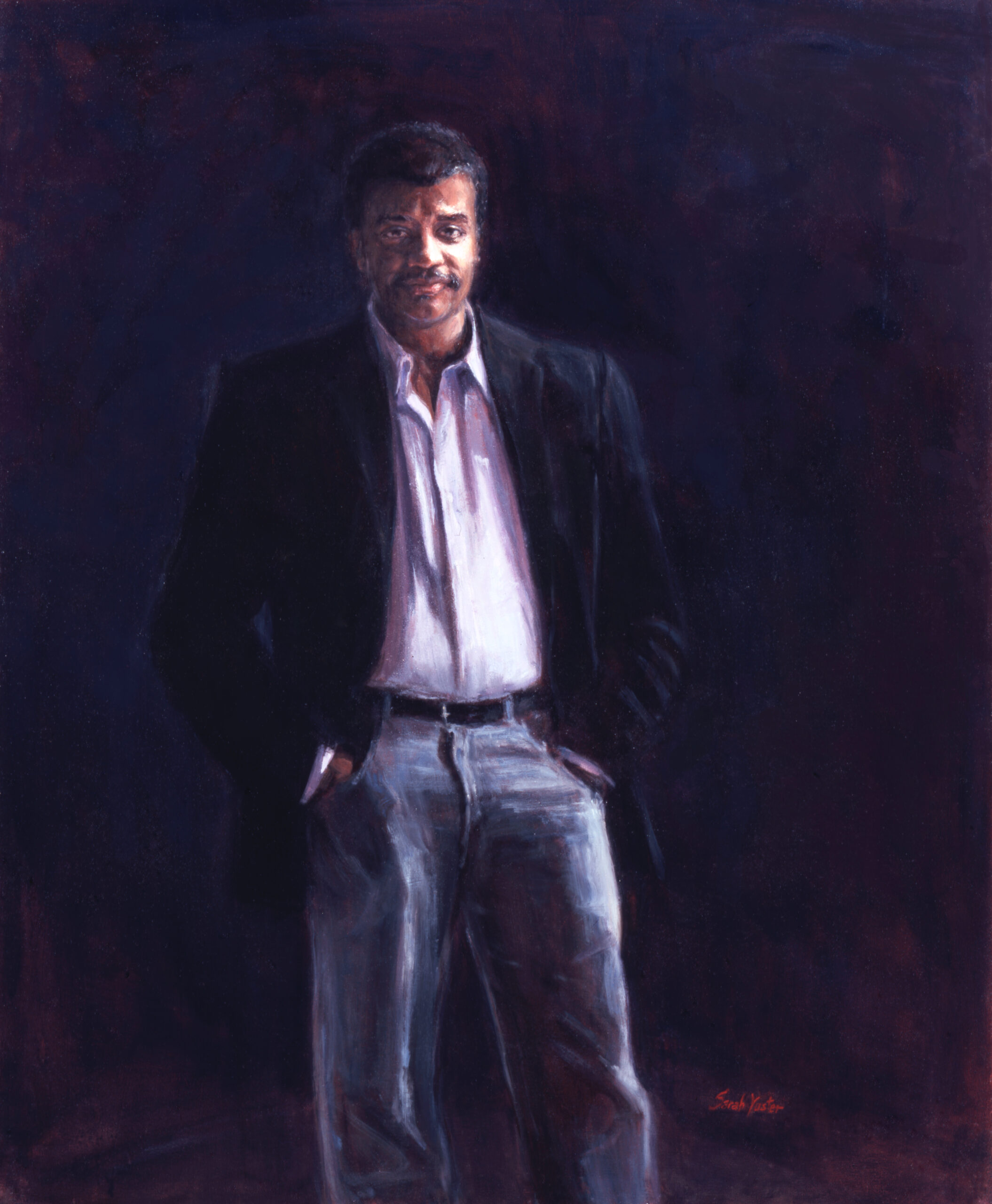
Neil DeGrasse Tyson. Oil on canvas. 40” x 49” (2006)
Neil deGrasse Tyson is an astrophysicist author, and current director of the Hayden Planetarium. His role as a science communicator has had an enormous effect on people of all ages and backgrounds. Via the series NOVA Cosmos and Star Talk, he makes science accessible and appealing to the masses. He also frequently appears on national popular talk shows discussing environmental and ecological issues.
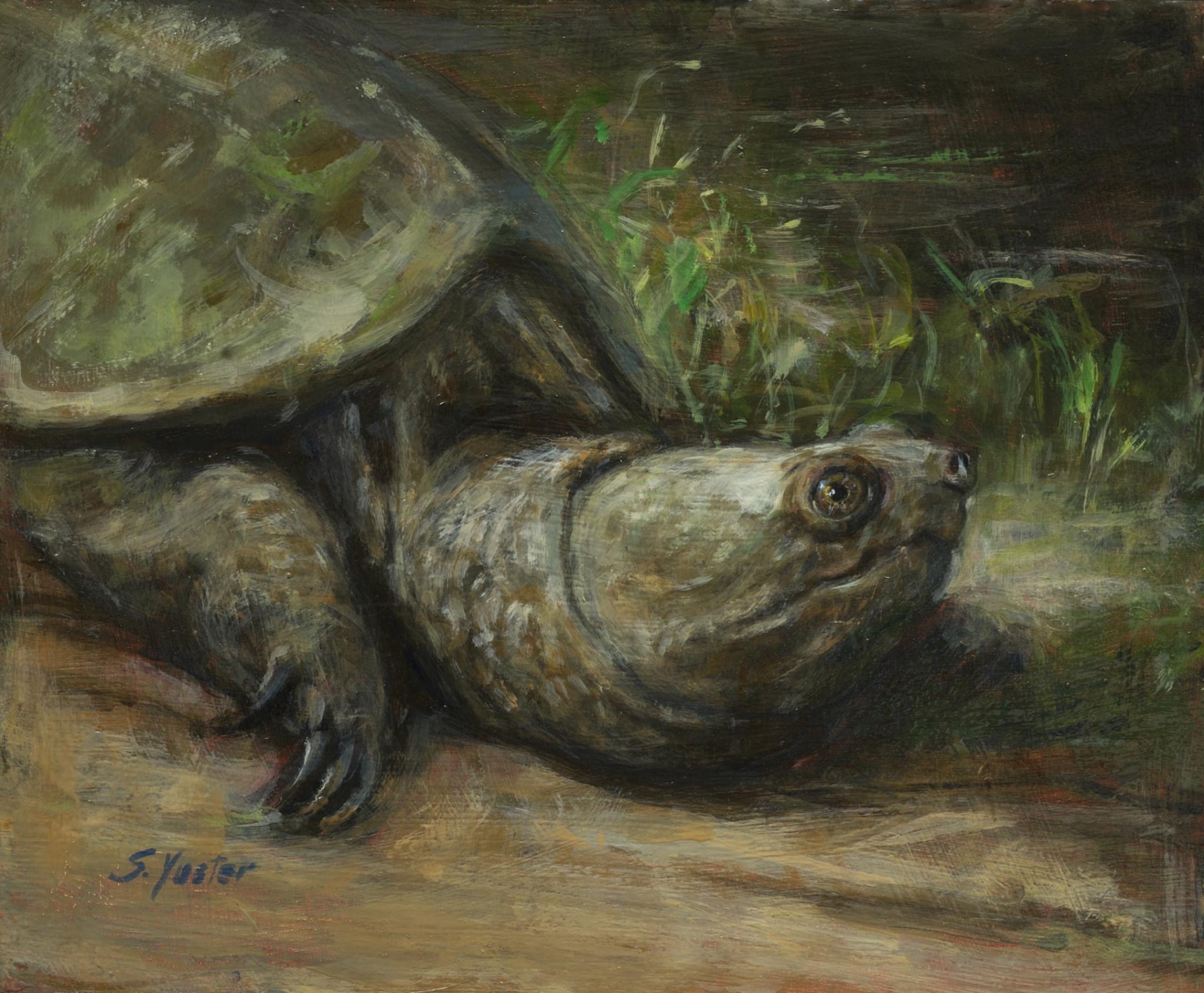
Watchful Repose. Oil on wood. 12.5″ x 10.5″ (2020)
Snapping turtles hold great lore. Every pond has a legendary giant that is as wide as a child’s arms can demonstrate – and then again as huge as that grown child’s adult arm span in recollection.
“They can break your wrist”, “chomp off your finger”, we were told – yet nobody truly knows anyone to whom such grave injury occurred.
This one was smaller than an ankylosaurus but definitely bigger than most I’ve encountered – at least 30″ from powerful snout to tail
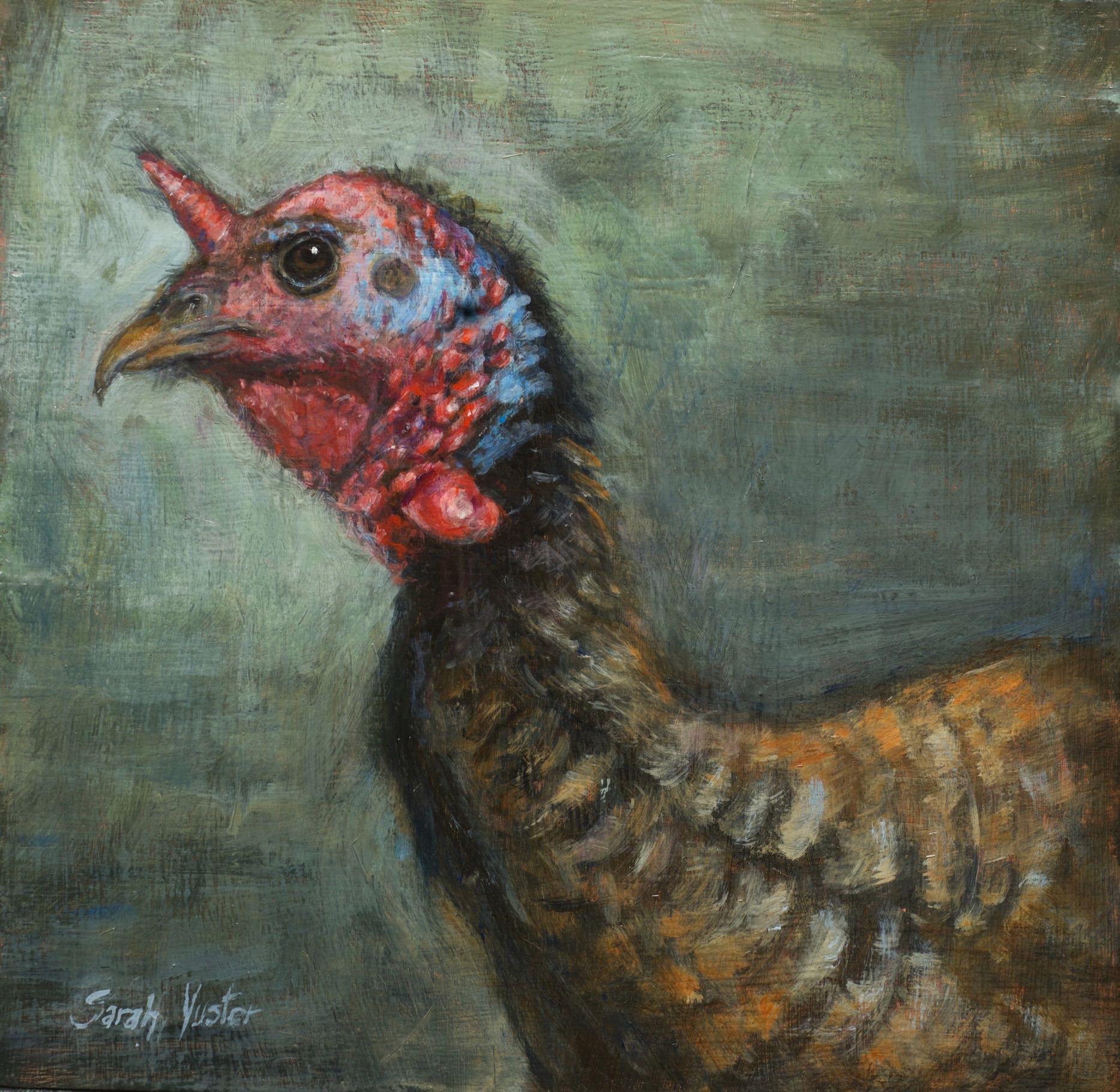
Vigilance. Oil on wood 12”x 12” (2021)
The wild turkey population is burgeoning in my neighborhood. They’re imposing in appearance and comfortable in their space.
I took photos when one stepped into my path with a cohort and opted to stay completely still, blocking me. The protuberance, much like a unicorn’s horn was interesting and the colors especially pronounced. I was curious so looked up information, learning that the “horn” is called a snood, usually a fleshy flap hanging over a turkey’s beak. In males, it’s generally much longer. When the animal is frightened, angry, agitated or amorous, the snood becomes erect. “When the turkey gets flustered, the blood vessels contract, exposing more of the collagen bands. This changes the way that incoming light scatters and reflects off of the turkey’s skin, causing it to appear blue or white.” Thus, my painting is of a visibly annoyed turkey.
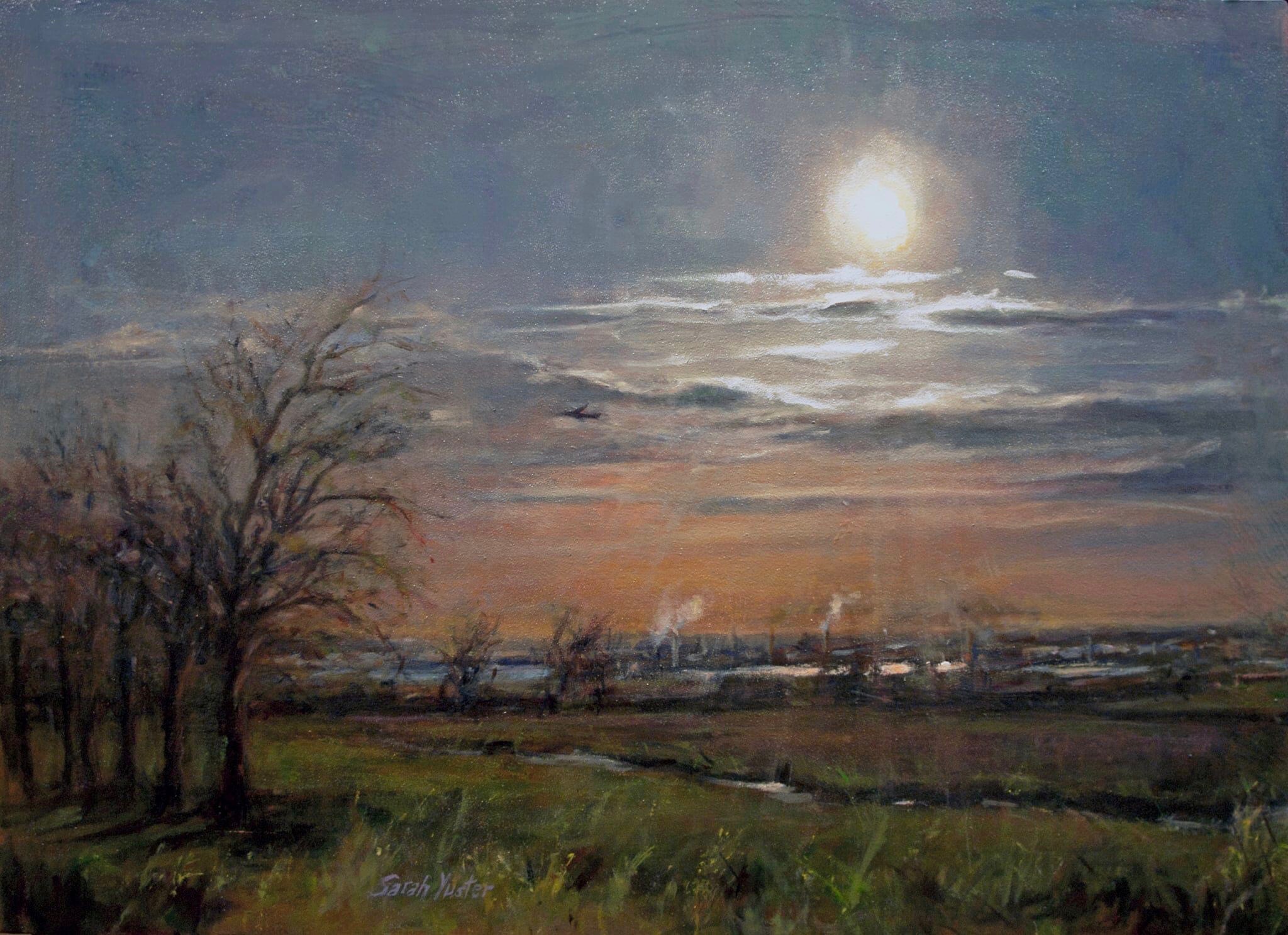
Linden, New Jersey from Staten Island. Oil on canvas. 30” x 22” (2017)
The view of New Jersey’s industrial shore from the Western side of Staten Island, a combination of marshland and recently reconstructed natural area that had formerly been the worlds largest landfill.

The Birders. Oil on canvas. 28” x 20″ (2022)
Father and son birdwatchers, these two spend much of their free time scouting the vast parklands and open spaces in NYC for wildlife, especially birds.

